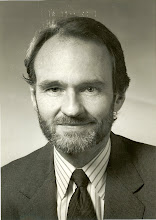While awaiting tomorrow’s payroll number (as always, given too much credence as a leading indicator) it is useful to consider a very distinct change in the way America goes about its business.
We were discouraged by the November elections results. There will always be another Obama; it is instead the lack of engagement, the better portion of the electorate, that so disappoints.
The masses are being served up redistributionsim as a diet and for the most part, do not seem to mind. The example of an imploding EU, of a near-bankrupt California or Illinois does not register.
Nothing in the past could diminish, at least for very long, the animal spirits of America. A leader was just a leader, soon to be gone if too extreme. A dalliance with bits of political adventure was tolerated; a effort to eviscerate the vision of the Founders was not. Until now.
This is why the typical economic resuscitation, that something that most of us strategists could count on, is no more. The rules have changed. American-style risk taking is hampered, is corroded when planners invade not only the political body, but also the monetary authority.
This then is the key, for both FI investor and trader. We have a new element, and it acts as a governor on real sector activity; and, it will continue to do so until the masses finally sicken of their diet, and retch up the whole mess.
Robert Craven
We were discouraged by the November elections results. There will always be another Obama; it is instead the lack of engagement, the better portion of the electorate, that so disappoints.
The masses are being served up redistributionsim as a diet and for the most part, do not seem to mind. The example of an imploding EU, of a near-bankrupt California or Illinois does not register.
Nothing in the past could diminish, at least for very long, the animal spirits of America. A leader was just a leader, soon to be gone if too extreme. A dalliance with bits of political adventure was tolerated; a effort to eviscerate the vision of the Founders was not. Until now.
This is why the typical economic resuscitation, that something that most of us strategists could count on, is no more. The rules have changed. American-style risk taking is hampered, is corroded when planners invade not only the political body, but also the monetary authority.
This then is the key, for both FI investor and trader. We have a new element, and it acts as a governor on real sector activity; and, it will continue to do so until the masses finally sicken of their diet, and retch up the whole mess.
Robert Craven
